Quantitative Analysis of Vernacular Residential Building Typologies and Bioclimatic Strategies in the Warm-Summer Mediterranean Climate: The Montesinho Natural Park as a Case Study
Abstract
:1. Introduction
2. Montesinho Natural Park (MNP) as Case Study
3. Vernacular Typologies of Selected Villages
3.1. Method, Basis, and Assumptions
3.2. Results
3.2.1. Absolute Distribution of Architectural Typologies in MNP
3.2.2. Relative Frequency and Probability for a Normal Distribution Approach
3.3. Discussion of the Results
4. Bioclimatic Strategies Observed in MNP Vernacular Architecture (Building Level)
4.1. High-Thermal-Inertia Walls
4.2. Roof
- (a)
- Gable roof
- (b)
- Thermal capture in low-roof spaces
- (c)
- Roof eave, extended roof, and balcony
- (d)
- Roof cover—tiles and slates
4.3. Animals/Cattle on the Ground Floor
4.4. Limited Number and Size of Openings
4.5. Small Indoor Building Space
4.6. Dark Thermal Envelope
4.7. Vegetation Wall
4.8. Kitchen and Fireplace Position
4.9. Summary of Bioclimatic Principles
5. Conclusions
5.1. Main Findings and Their Significance
5.2. Example of Linkages between Typology and Bioclimatic Strategy
5.3. Circularity, Life Cycle, and Sustainability Aspects
5.4. Limitations, Biases, and Future Recommendations
5.5. Insights, Comparison, and Actionable Recommendations
Author Contributions
Funding
Data Availability Statement
Conflicts of Interest
References
- Gonçalves, J.; Mateus, R.; Fernandes, J.; Ferreira, T. Tradition in Continuity: Thermal monitoring in vernacular architecture of farmsteads from northeast Portuguese region of Trás-os-Montes. In Portugal SB13 Contribution of Sustainable Building to Meet EU 20-20-20 Targets; Bragança, L., Pinheiro, M., Mateus, R., Eds.; Multicomp.-XVIII: Guimarães, Portugal, 2013; pp. 259–267. [Google Scholar]
- de Oliveira, E.V.; Galhano, F. Arquitectura Tradicional Portuguesa, 5th ed.; Publicações Dom Quixote: Lisboa, Portugal, 2003. [Google Scholar]
- De Figueiredo, T. Montesinho and the mountains of northern Portugal. In Natural Heritage from East to West: Case Studies from 6 EU Countries; Springer: Berlin/Heidelberg, Germany, 2010; pp. 111–118. [Google Scholar] [CrossRef]
- Tawayha, F.A.; Braganca, L.; Mateus, R. Contribution of the Vernacular Architecture to the Sustainability: A Comparative Study between the Contemporary Areas and the Old Quarter of a Mediterranean City. Sustainability 2019, 11, 896. [Google Scholar] [CrossRef]
- Gallaecia, E.S.; di Firenze, U.D.S.; de València, U.P. From Vernacular to World Heritage; Firenze University Press: Firenzi, Italy, 2020; Available online: http://openarchive.icomos.org/id/eprint/2484/ (accessed on 5 July 2022).
- Coch, H. Chapter 4—Bioclimatism in vernacular architecture. In Renewable and Sustainable Energy Reviews; Elsevier Science: Amsterdam, The Netherlands, 1998; Volume 2, pp. 67–87. [Google Scholar]
- Ribeiro, V. Materiais, Sistemas e Técnicas de Construção Tradicional: Contributo Para o Estudo da Arquitectura Vernácula da Região Oriental da Serra Do Caldeirão; Edições Afrontamento e Comissão de Coordenação e Desenvolvimento Regional do Algarve: Faro, Portugal, 2008. [Google Scholar]
- Fernandes, J.; Mateus, R. Energy efficiency principles in Portuguese vernacular architecture. In Proceedings of the BSA 2012: International Conference on Building Sustainability Assessment, Porto, Portugal, 23–25 May 2012; Amoêda, R., Mateus, R., Bragança, L., Pinheiro, C., Eds.; Greenlines Institute for Sustainable Development: Porto, Portugal, 2012; pp. 561–572. [Google Scholar]
- Anna-Maria, V. Evaluation of a sustainable Greek vernacular settlement and its landscape: Architectural typology and building physics. Build Environ. 2009, 44, 1095–1106. [Google Scholar] [CrossRef]
- Hilokyprou, M.P.; Michael, A.; Malaktou, E.; Savvides, A. Environmentally responsive design in Eastern Mediterranean. The case of vernacular architecture in the coastal, lowland and mountainous regions of Cyprus. Build Environ. 2017, 111, 91–109. [Google Scholar] [CrossRef]
- Ruggiero, G.; Parlavecchia, M.; Sasso, P.D. Typological characterisation and territorial distribution of traditional rural buildings in the Apulian territory (Italy). J. Cult. Herit. 2019, 39, 278–287. [Google Scholar] [CrossRef]
- Azevedo, T. Arquitetura Vernácula em Guadramil. Mestrado Integrado em Arquitectura e Urbanismo; Escola Superior Gallaecia: Vila Nova de Cerveira, Portugal, 2012; Available online: https://comum.rcaap.pt/handle/10400.26/9255 (accessed on 23 January 2023).
- Pinto, J.S.; Paiva, A.; Pereira, S.; Almeida, D.; Antunes, A.; Bento, R. Highlighting the Heritage of Meseta Ibérica; Universitat Politecnica de Valencia: Valencia, Spain, 2022; pp. 1–7. [Google Scholar] [CrossRef]
- Pinto, J.; Pereira, S.; Paiva, A.; Lanzinha, J.; Bento, R. Riomanzanas Village as Part of the Landscape of Meseta Ibérica. Lect. Notes Civ. Eng. 2024, 444, 330–340. [Google Scholar] [CrossRef]
- Pereira, M.L.F. Caraterização Térmica de Soluções Construtivas em Xisto e em Granito. Dissertação de Mestrado em Engenharia Civil, Universidade De Trás-Os-Montes E Alto Douro, Vila Real, Portugal, 2016. Available online: http://repositorio.utad.pt/handle/10348/6022 (accessed on 20 November 2023).
- Ferreira, D.; Luso, E.; Fernandes, S.; Vaz, A.J.F.; Moreno, C.; Correia, R. Bioclimatic solutions existing in vernacular architecture Rehabilitation techniques. In Portugal SB13—Contribution of Sustainable Building to Meet EU 20-20-20 Targets; Bragança, L., Pinheiro, M., Mateus, R., Eds.; Universidade do Minho/Instituto Superior Técnico: Guimarães, Portugal, 2013; pp. 639–645. [Google Scholar]
- Vaz, A.J.F.; Ferreira, D.; Luso, E.; Fernandes, S. Manual BIOURB—Manual Para a Conservação e Reabilitação da Diversidade Bioconstrutiva; Câmara Municipal de Bragança: Bragança, Portugal, 2013; Available online: http://hdl.handle.net/10198/9090 (accessed on 10 April 2022).
- Hernández Aja, A.; Fariña Tojo, J.; Gálvez Huerta M, Á.; Fernández Áñez, V.; Gonçalves, A.; Ribeiro, A.C.; Feliciano, M. Manual de desenho bioclimático urbano. In Manual de Orientações Para a Elaboração de Normas Urbanísticas; Instituto Politécnico de Bragança: Bragança, Portugal, 2013; p. 281. Available online: https://bibliotecadigital.ipb.pt/handle/10198/10753 (accessed on 27 June 2024).
- Silva, F.M.; Sousa, C.; Albuquerque, H. Analytical Model for the Development Strategy of a Low-Density Territory: The Montesinho Natural Park. Sustainability 2022, 14, 4373. [Google Scholar] [CrossRef]
- Koh, J. Ecological Design: A Post-Modern Design Paradigm of Holistic Philosophy and Evolutionary Ethic. Landsc. J. 1982, 1, 76–84. [Google Scholar] [CrossRef]
- Direcção-Geral da Divulgação. Artes e Tradições de Bragança; Terra Livre: Lisboa, Portugal, 1984. [Google Scholar]
- AAVV. Atlas Climático Ibérico: Temperatura do Ar e Precipitação (1971-2000); Agencia Estatal de Meteorología & Instituto de Meteorologia de Portugal: Madrid, Spain, 2011; Available online: https://www.ipma.pt/resources.www/docs_pontuais/ocorrencias/2011/atlas_clima_iberico.pdf (accessed on 12 June 2022).
- Instituto de Conservação da Natureza (ICN). Plano de Ordenamento do Parque Natural de Montesinho (POPNM); Estudos de Caracterização: Bragança, Portugal, 2007; Available online: https://www.icnf.pt/api/file/doc/979382410b9fe1db (accessed on 6 May 2024).
- Peel, M.C.; Finlayson, B.L.; McMahon, T.A. Updated world map of the Köppen-Geiger climate classification. Hydrol. Earth Syst. Sci. 2007, 11, 1633–1644. [Google Scholar] [CrossRef]
- Cunha, S.; Silva, A.; Coelho, F.; Nunes, L.; Pires, V.; Mendes, L.; Mendes, M. Atlas Climatológico de Portugal Continental 1971-2000; Cartografia da temperatura do ar e da precipitação: Lisboa, Portugal, 2010. [Google Scholar]
- IPMA. Normais Climatológicas (1971-2000); Portuguese Institute of the Sea and the Atmosphere: Lisbon, Portugal, 2023; Available online: https://www.ipma.pt/bin/file.data/climate-normal/cn_71-00_BRAGANCA.pdf (accessed on 21 April 2023).
- Goncalves, M.M.; Cano, M.T.P.; Rosendahl, S. From stone masonry to emigrant’s mansions. Changes in vernacular architecture in central Portugal. IOP Conf. Ser. Mater. Sci. Eng. 2019, 603, 022064. [Google Scholar] [CrossRef]
- Tapiero, J.C.A.; Graus, S.; Khei, S.; Silva, D.; Conde, O.; Ferreira, T.M.; Ortega, J.; Luso, E.; Rodrigues, H.; Vasconcelos, G. An ICT-Enhanced Methodology for the Characterization of Vernacular Built Heritage at a Regional Scale. Int. J. Archit. Herit. 2024, 1–19. [Google Scholar] [CrossRef]
- Antunes, A.d.M.; Gomes, A.A.; Menéres, A.; de Freitas, A.P.; Araújo, A.; Martins, A.P.; Dias, C.C.; de Castro, C.; Távora, F.; Torres, F.; et al. Arquitectura Popular em Portugal, 3rd ed.; Associação dos Arquitectos Portugueses: Lisboa, Portugal, 1988; Volume 1. [Google Scholar]
- Cruz, C.M.T.; Redentor, A. Montesinho Num Olhar à Arquitectura Popular Catálogo da Exposição; Parque Natural de Montesinho: Bragança, Portugal, 2000; Available online: https://www.academia.edu/481628/Montesinho_num_olhar_%C3%A0_Arquitectura_popular_cat%C3%A1logo_da_exposi%C3%A7%C3%A3o_Bragan%C3%A7a_Parque_Natural_de_Montesinho_2000 (accessed on 7 November 2023).
- Martin Andrés, A.; Luna del Castillo, J. Bioestadίstica Para Las Ciencias de la Salud, 4th ed.; Ediciones Norma: Madrid, Spain, 1993. [Google Scholar]
- Sachs, L. Applied Statistics: A Handbook of Techniques; Springer: Berlin/Heidelberg, Germany, 1978. [Google Scholar]
- MATLAB; Version (2023b); The MathWorks Inc.: Natick, MA, USA, 2023.
- Statgraphics Centurion; Versión (19.5.01); Statgraphics Technologies Inc.: The Plains, VA, USA, 2022.
- Llano, P.D. Arquitectura Popular en Galicia: Razón e Construcción; Colexio Oficial De Arquitectos de Galicia (COAG), Comisión de Cultura: A Coruña, Spain, 1996. [Google Scholar]
- Guerra, J.L.S. Edificios y Conjuntos de Arquitectura Popular en Castilla y León; Junta de Castilla y León: Valladolid, Spain, 2012; Available online: http://patrimoniocultural.jcyl.es/web/jcyl/PatrimonioCultural/es/Plantilla100Detalle/1284217324650/_/1284216312761/Redaccion (accessed on 22 February 2024).
- Anjo, A.F. Sustentabilidade Arquitetónica a Partir de Uma Perspetiva Termodinâmica: Aprender Com a Arquitetura Vernacular em Trás-os-Montes. Master’s Thesis, Universidade do Coimbra, Coimbra, Portugal, 2020. Available online: https://estudogeral.uc.pt/handle/10316/93883 (accessed on 20 October 2023).
- Fernandes, J.; Mateus, R.; Bragança, L.; Da Silva, J.J.C. Portuguese vernacular architecture: The contribution of vernacular materials and design approaches for sustainable construction. Archit. Sci. Rev. 2015, 58, 324–336. [Google Scholar] [CrossRef]
- Montalbán Pozas, B.; González, F.J.N. Hygrothermal behaviour and thermal comfort of the vernacular housings in the Jerte Valley (Central System, Spain). Energy Build 2016, 130, 219–227. [Google Scholar] [CrossRef]
- Fernandes, J.; Pimenta, C.; Mateus, R.; Silva, S.M.; Bragança, L. Contribution of Portuguese vernacular building strategies to indoor thermal comfort and occupants’ perception. Buildings 2015, 5, 1242–1264. [Google Scholar] [CrossRef]
- Fernandes, J.; Mateus, R.; Gervásio, H.; Silva, S.M.; Bragança, L. Passive strategies used in Southern Portugal vernacular rammed earth buildings and their influence in thermal performance. Renew Energy 2019, 142, 345–363. [Google Scholar] [CrossRef]
- Sozen, I.; Oral, G.K. Evaluation of Parameters Affecting Energy Efficiency of Vernacular Mardin Houses: A Case Study. Megaron 2019, 14, 1–10. [Google Scholar] [CrossRef]
- Costa-Carrapiço, I.; González, J.N.; Raslan, R.; Sánchez-Guevara, C.; Marrero, M.D.R. Understanding thermal comfort in vernacular dwellings in Alentejo, Portugal: A mixed-methods adaptive comfort approach. Build Environ. 2022, 217, 109084. [Google Scholar] [CrossRef]
- Ferreira Vaz, J.; Fernandes, S.; Luso, E.; Ferreira, D. Bioclimatic solutions in vernacular architecture: Transition spaces. Eur. Sci. J. 2015, 67–73. Available online: https://eujournal.org/index.php/esj/issue/view/176 (accessed on 22 February 2024).
- Nguyen, A.T.; Tran, Q.B.; Tran, D.Q.; Reiter, S. An investigation on climate responsive design strategies of vernacular housing in Vietnam. Build Environ. 2011, 46, 2088–2106. [Google Scholar] [CrossRef]
- Cruz, C. A Arquitectura Popular. In Parque Natural de Montesinho: Um Guia Para o Visitante; Azevedo, J.C.M., Ed.; Morada: Mirandela, Portugal, 1998; pp. 58–66. [Google Scholar]
- BIOURB. Diversidade Bioconstrutiva Transfronteiriça, Edificação Bioclimática ea Sua Adaptação Pela Arquitetura eo Urbanismo Modernos—Soluções Singulares Bioclimáticas. 2013. Available online: http://biourbhost.net/descargas/Trabajos%20de%20campo/00%20Solu+-¦++ües%20PORTUGU++¿S.pdf (accessed on 18 December 2023).
- English Heritage. Practical Building Conservation: Stone, 1st ed.; Ashgate Publishing: Surrey, UK, 2012; Available online: https://historicengland.org.uk/images-books/publications/stone-conservation/ (accessed on 22 October 2023).
- de Oliveira, E.V.; Galhano, F.; Pereira, B. Construções Primitivas em Portugal, 3rd ed.; Publicações Dom Quixote: Lisboa, Portugal, 1994. [Google Scholar]
- Labus, M.; Labus, K.; Bujok, P. Thermal parameters of roofing slates from Czech Republic. J. Therm. Anal. Calorim. 2020, 140, 2215–2223. [Google Scholar] [CrossRef]
- Sayigh, A.; Marafia, A.H. Chapter 2—Vernacular and contemporary buildings in Qatar. Renew. Sustain. Energy Rev. 1998, 2, 25–37. [Google Scholar] [CrossRef]
- Fernandes, J.E.P.; Mateus, R.; Gervásio HM, S.; Silva, S.M.; Bragança, L. The importance of vernacular strategies for a climate responsive building design. In SBE16 Brazil & Portugal Sustainable Urban Communities towards a Nearly Zero Impact Built Environment; Universidade Federal do Espírito Santo (UFES): Victoria, Brazil, 2016; pp. 429–438. [Google Scholar] [CrossRef]
- Arqués, J.; Inmaculada, M. Arquitectura popular en la provincia de Zamora. In Narria: Estudios de Artes y Costumbres Populares 20; Universidad Autónoma de Madrid, Facultad de Filosofía y Letras, Museo de Artes y Tradiciones Populares: Madrid, Spain, 1980; pp. 3–5. Available online: https://repositorio.uam.es/handle/10486/8083 (accessed on 7 November 2023).
- Pereira, S.; Paiva, A.; Teixeira, T.; Cunha, V.; Pinto, J. Energy Rehabilitation of Portuguese Ancient Buildings-A first step into the existing schist buildings in the Alto Douro Wine Region. In Proceedings of the XXXVIII. IAHS World Congress on Housing Visions for the Future of Housing: Mega Cities Design, Construction, Financing, Management, Housing Projects, Istanbul, Turkey, 16–19 April 2012. [Google Scholar]
- Bazdidi-Tehrani, F.; Masoumi-Verki, S.; Gholamalipour, P. Impact of opening shape on airflow and pollutant dispersion in a wind-driven cross-ventilated model building: Large eddy simulation. Sustain. Cities Soc. 2020, 61, 102196. [Google Scholar] [CrossRef]
- Barroso, C.E.; Oliveira, D.V.; Ramos, L.F. Physical and mechanical characterization of vernacular dry stone heritage materials: Schist and granite from Northwest Portugal. Constr. Build Mater. 2020, 259, 119705. [Google Scholar] [CrossRef]
- EMI and ACCIONA. Guide for Bioclimatic Design (WP2.4-Del 2.4.4). 2015. Available online: https://smart-cities-marketplace.ec.europa.eu/sites/default/files/pimes_guide_for_bioclimatic_design.pdf (accessed on 3 March 2024).
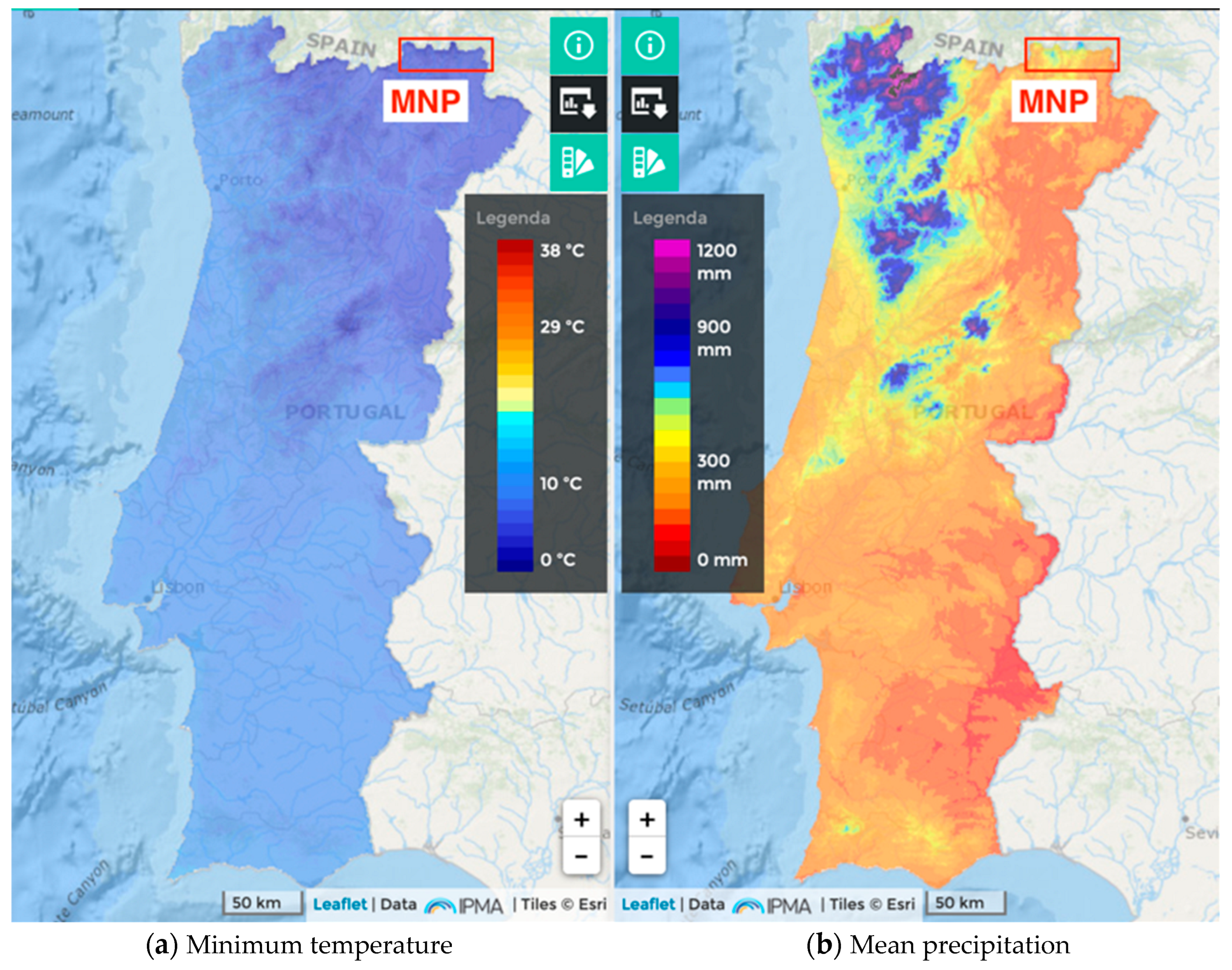

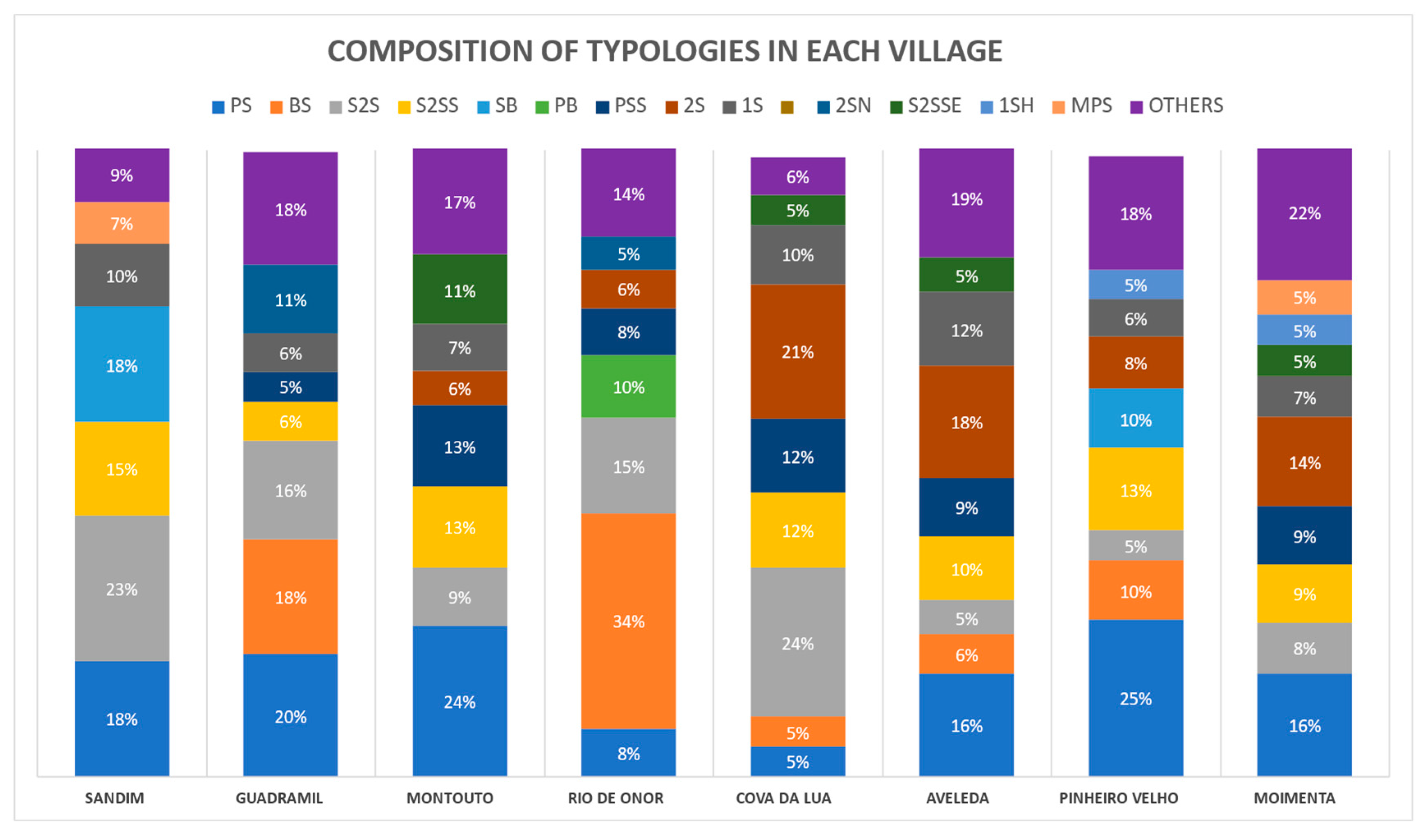
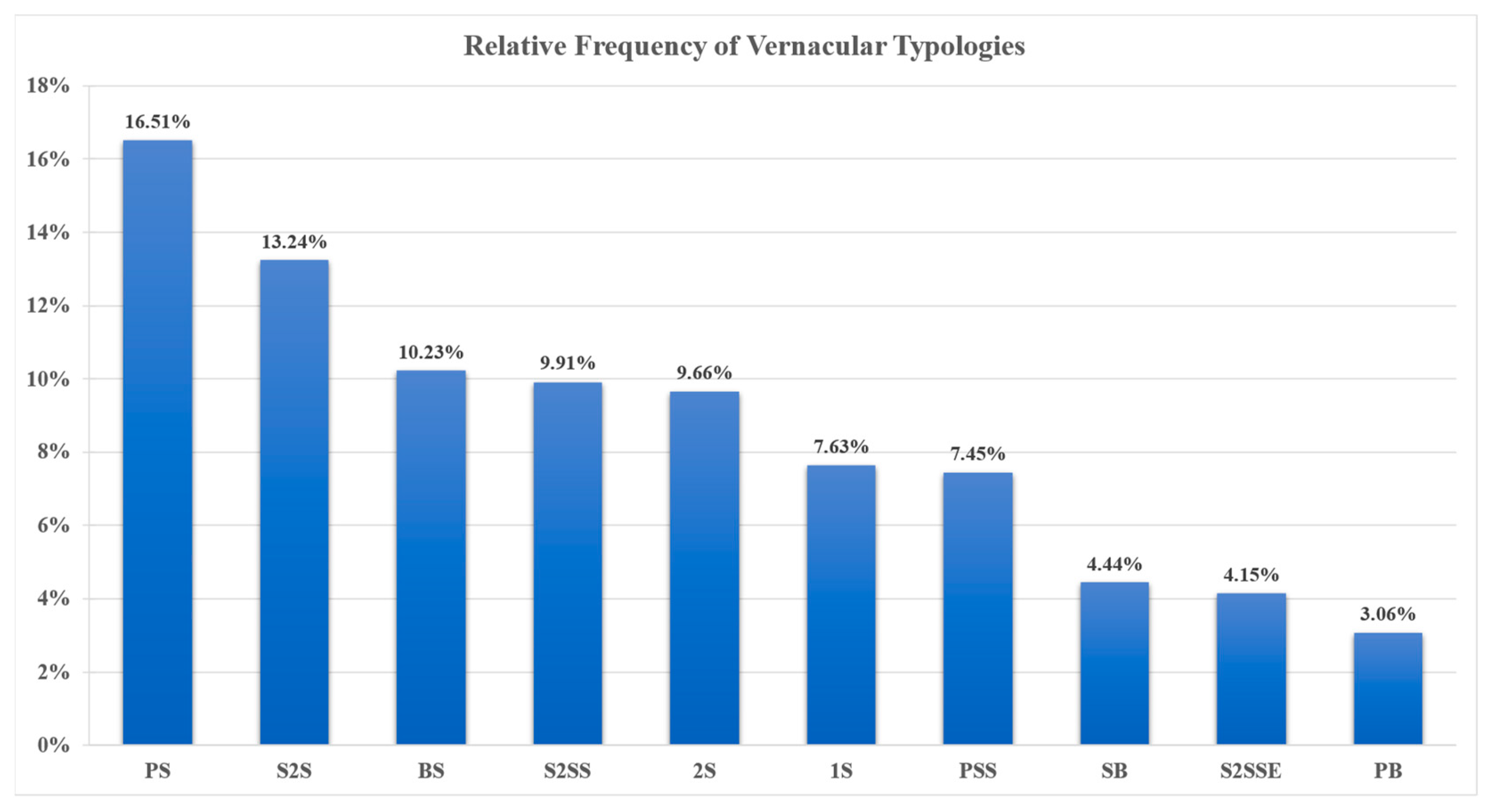
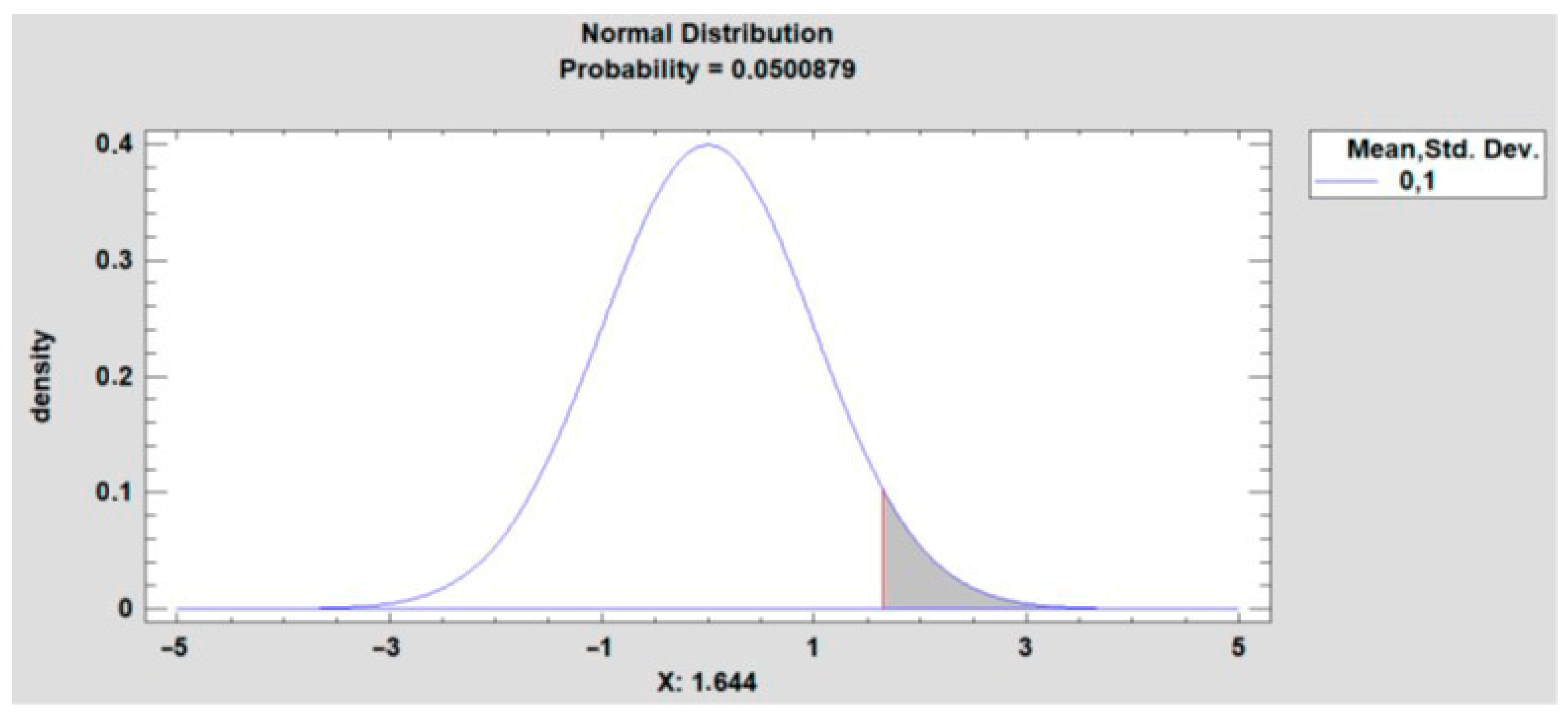
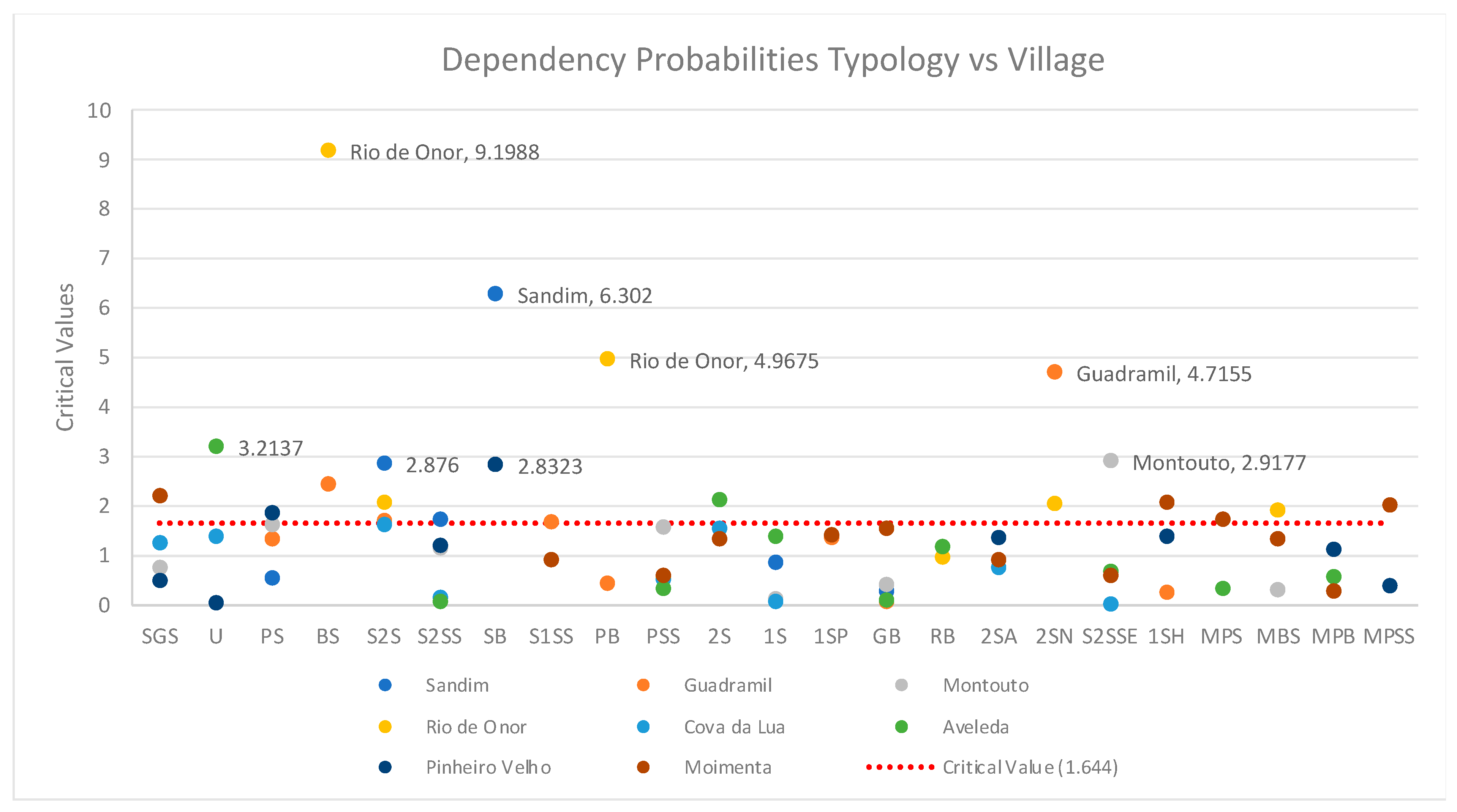
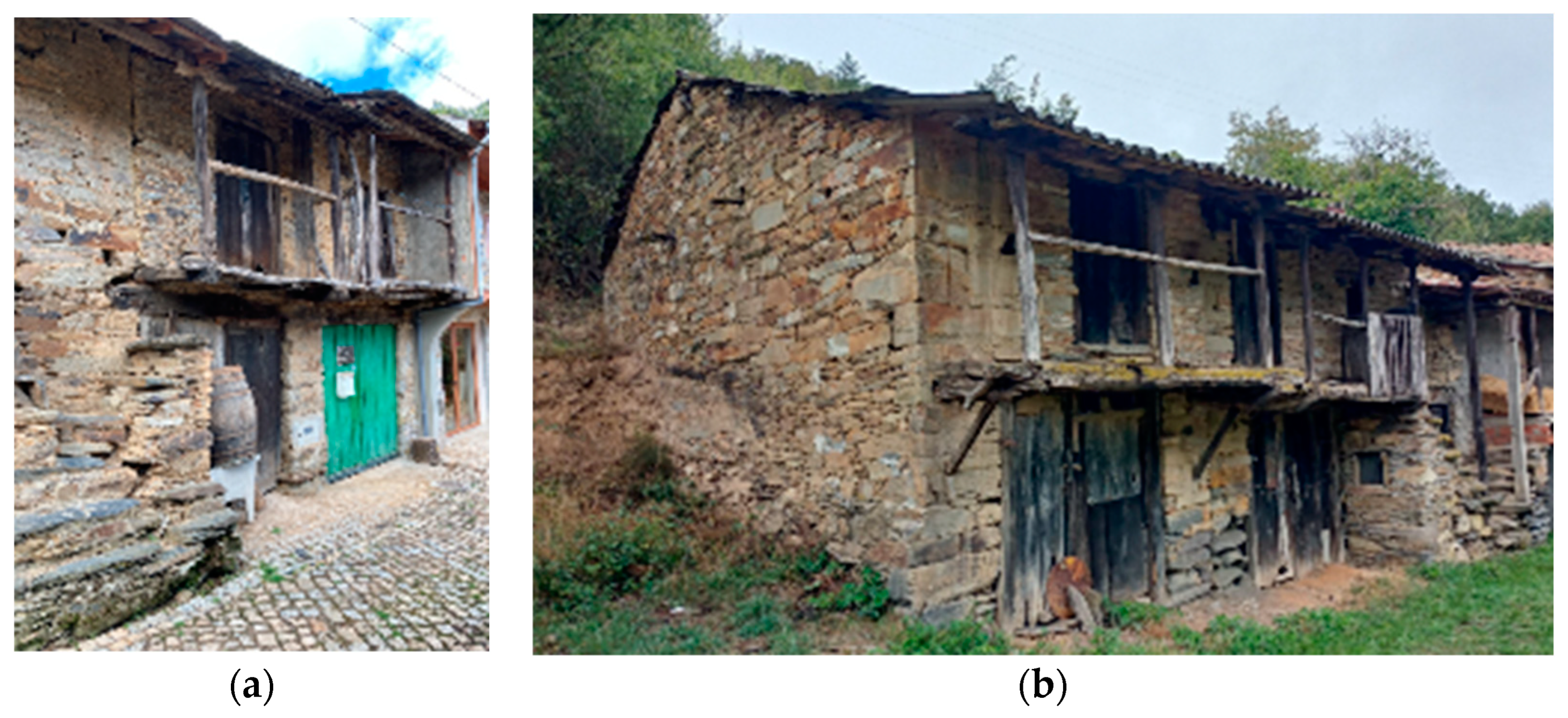

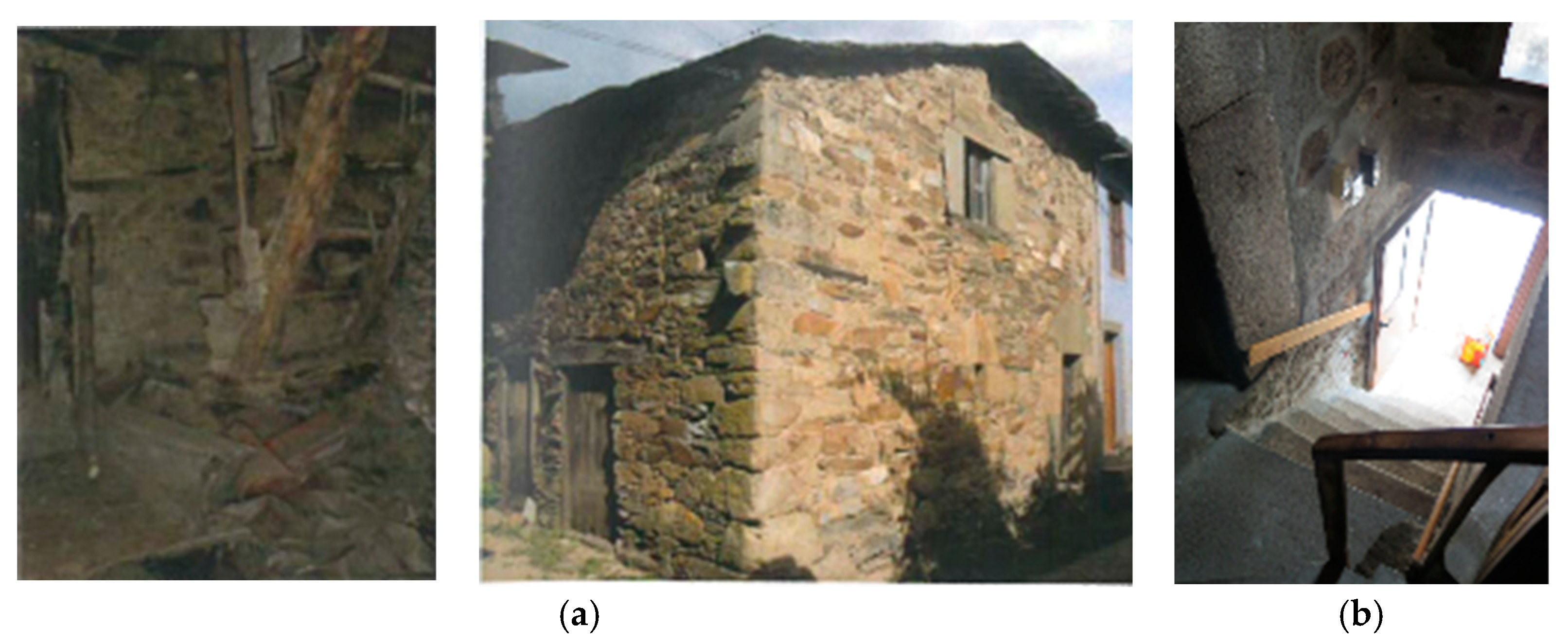
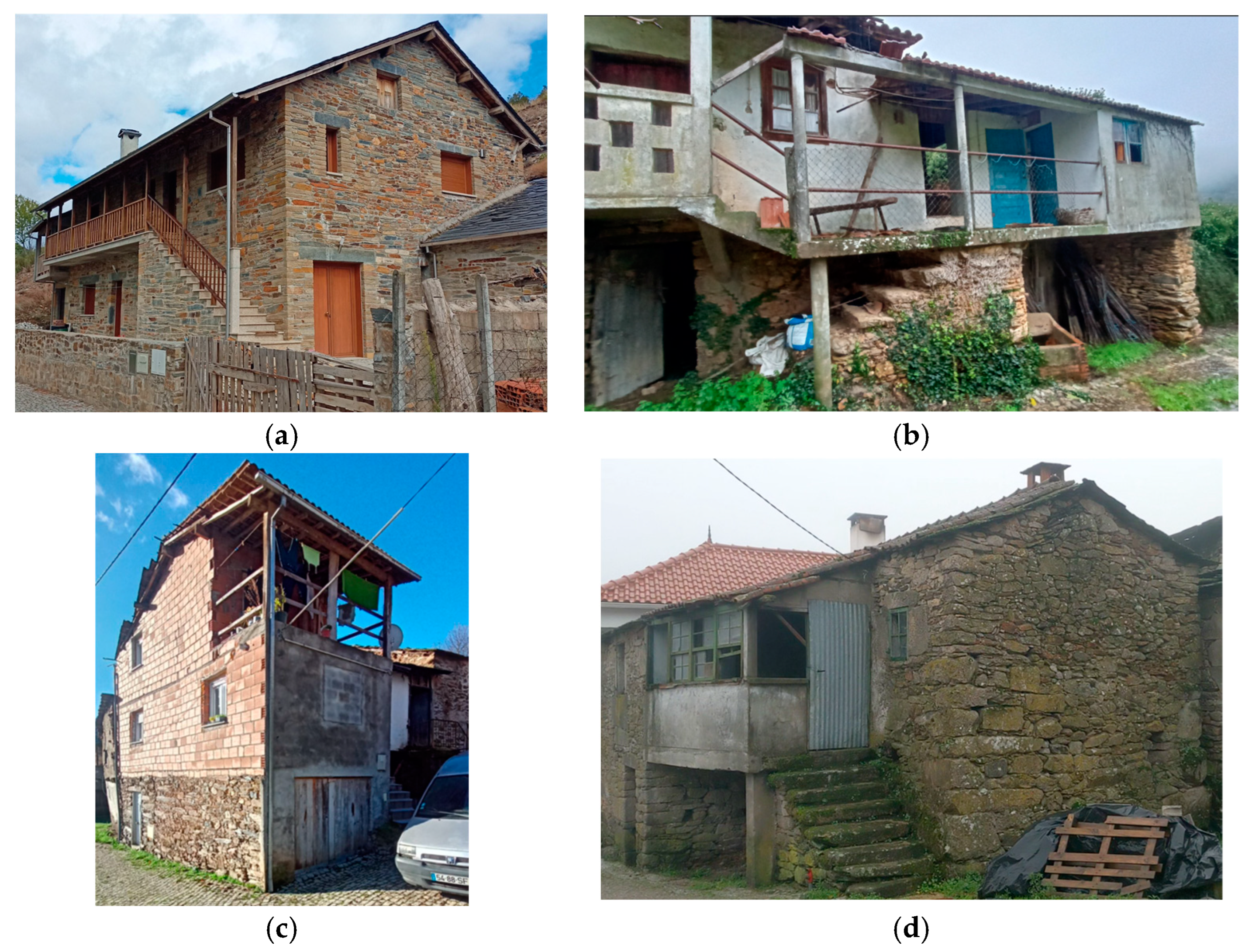
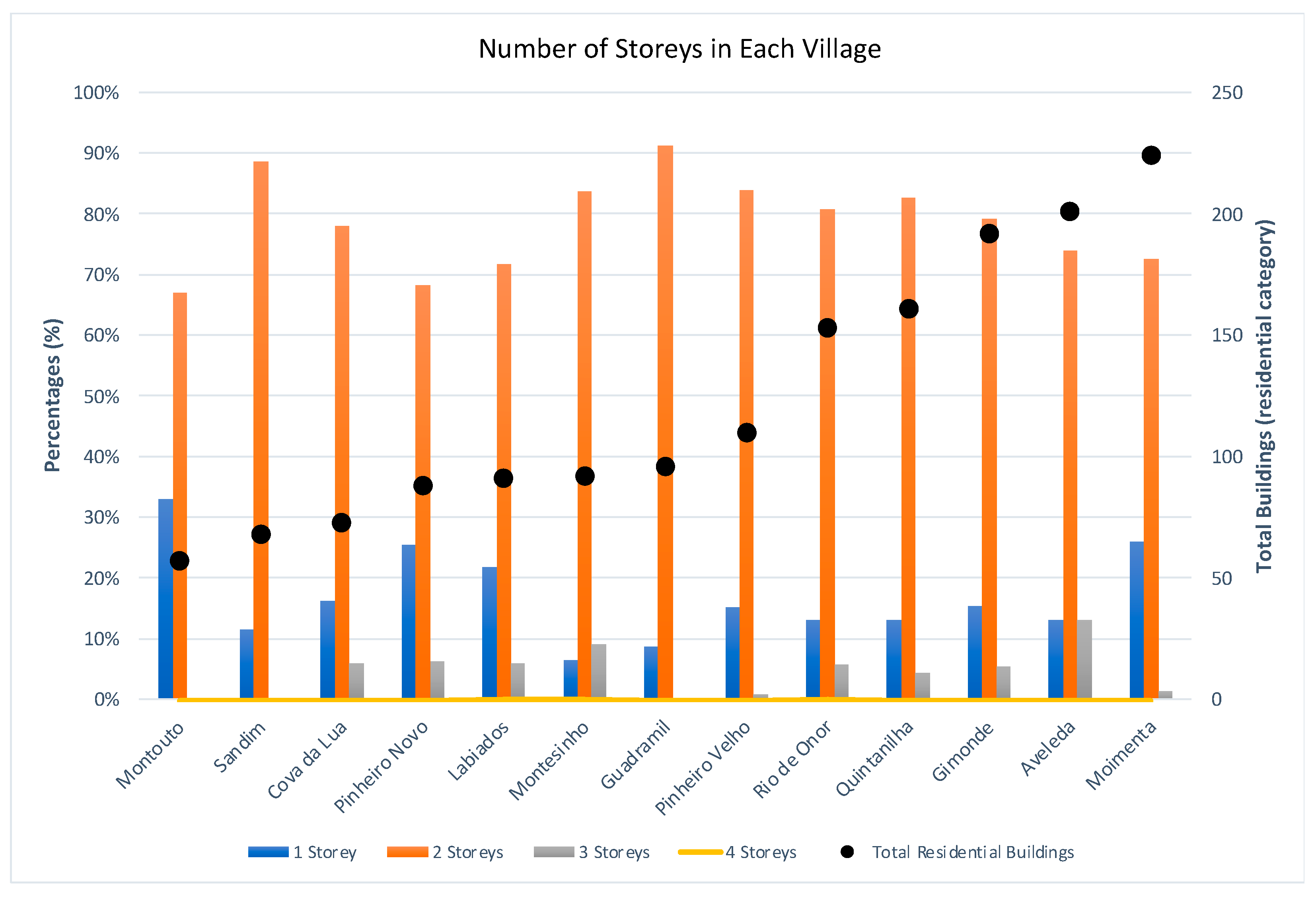
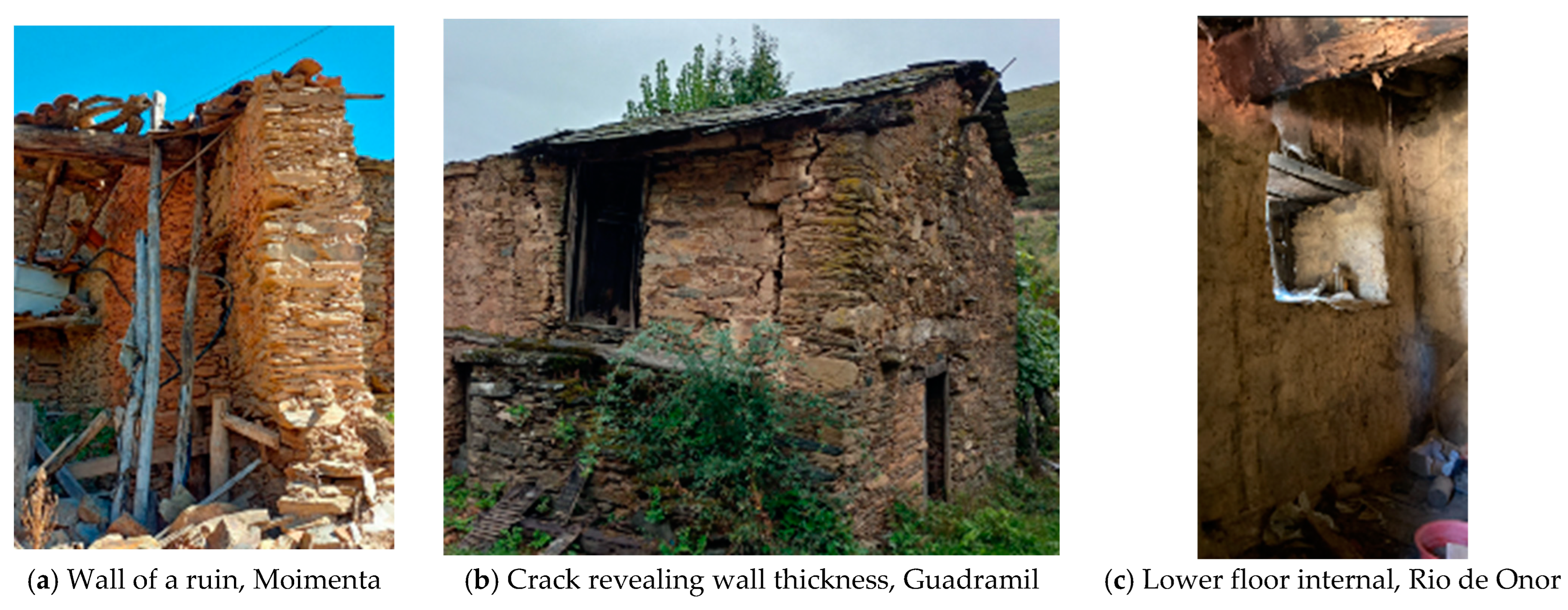

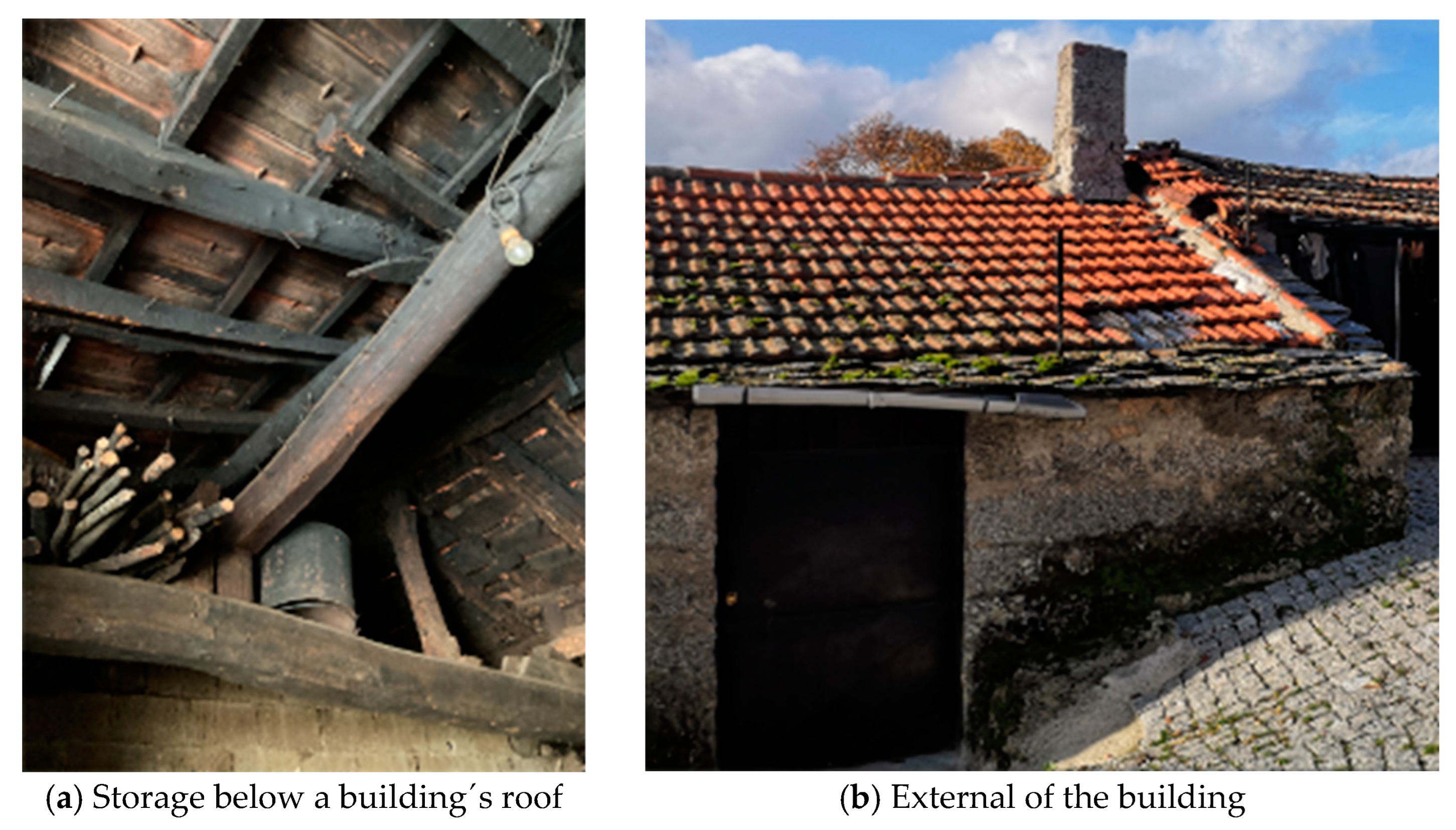


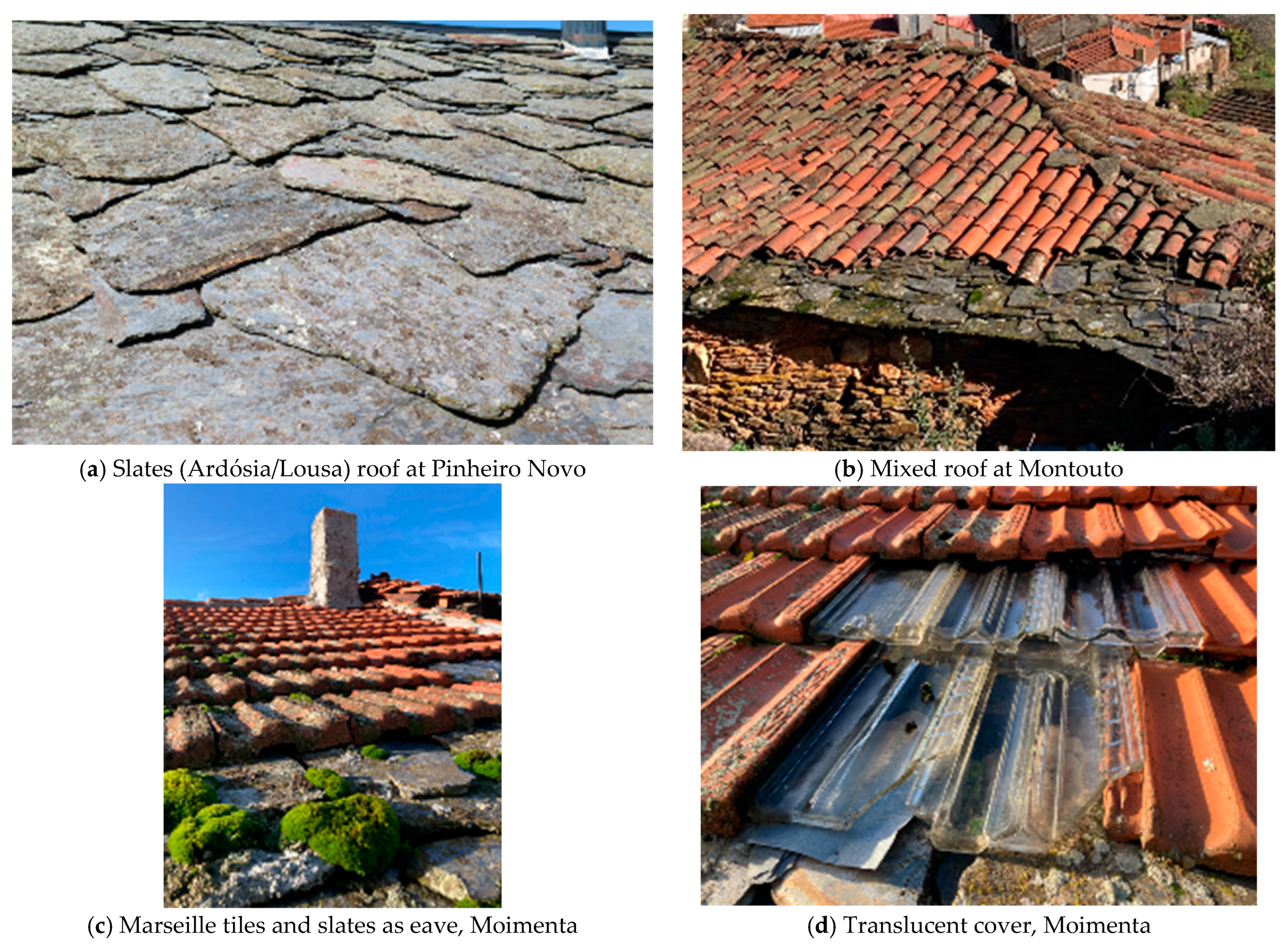
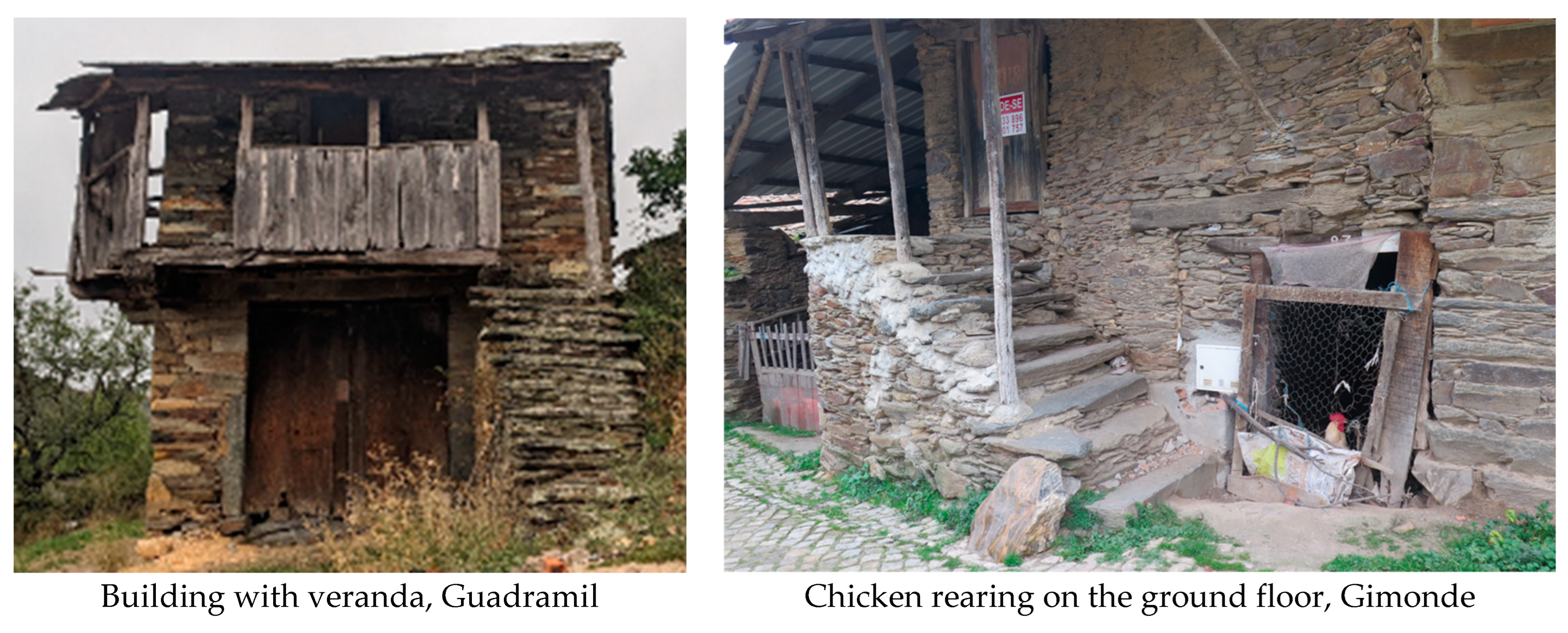

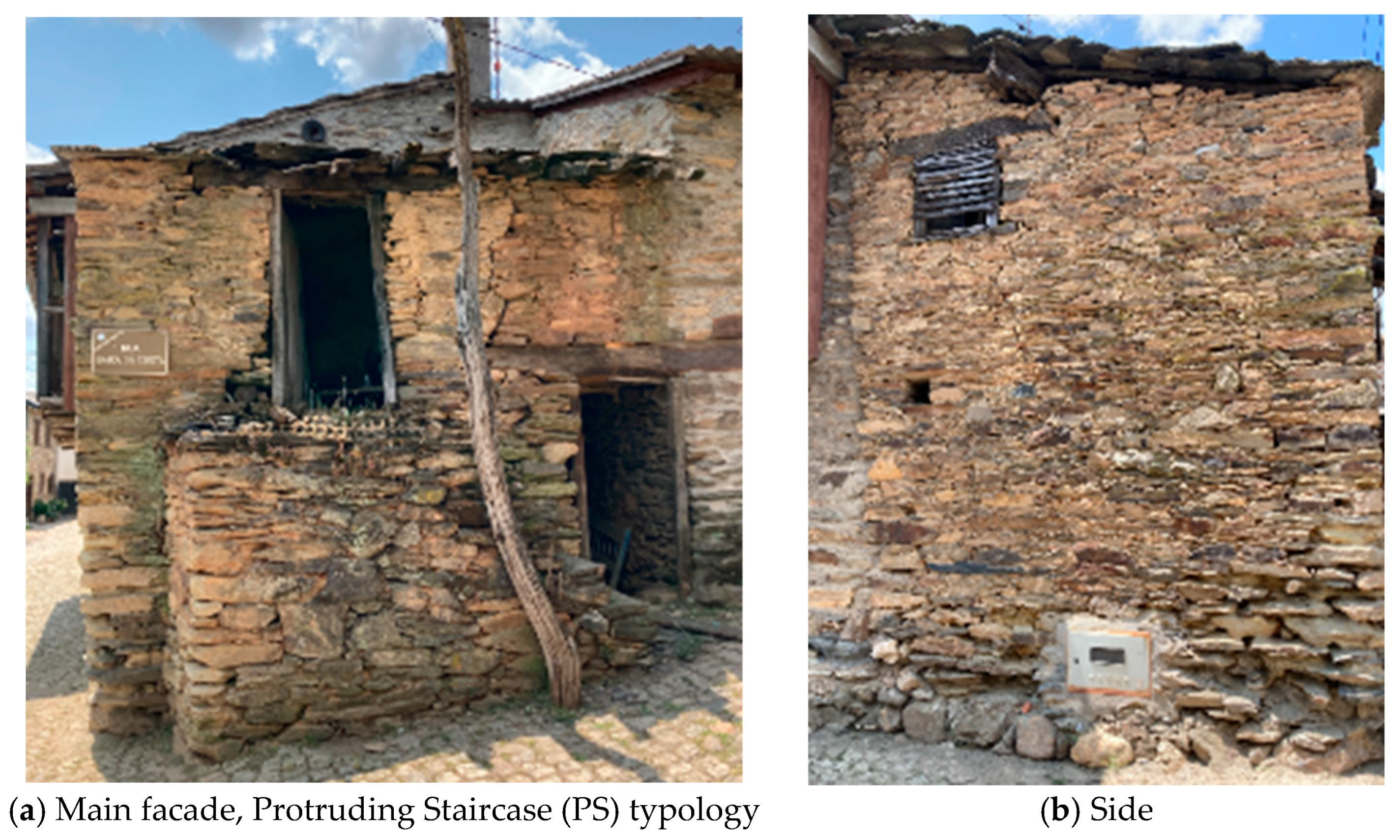


| Items | Lowest | Highest | December | January | February | July | August | September |
|---|---|---|---|---|---|---|---|---|
| Average Maximum Daily Temperature, °C | Jan 8.5 | Jul–Aug 28.5 | 9.4 | 8.5 | 11.1 | 28.5 | 28.5 | 24.8 |
| Average Minimum Daily Temperature, °C | Jan 0.3 | Jul 14 | 1.7 | 0.3 | 1.3 | 14 | 13.7 | 11.5 |
| Highest Daily Maximum Temperature, °C | Jan 17.4 | Jul 38.8 | 18.8 | 17.4 | 20.4 | 38.8 | 38.4 | 37.7 |
| Lowest Daily Minimum Temperature, °C | Feb −11.6 | Jul–Aug 4.4 | −7.1 | −11.4 | −11.6 | 4.4 | 4.4 | 1.4 |
| Average Amount of Total Precipitation (mm) | Aug 18.4 | Dec 118.6 | 118.6 | 95.8 | 75 | 19.6 | 18.4 | 45 |
| Highest Value of the Amount of Daily Precipitation (mm) | Dec 77.9 | Aug 29 | 77.9 | 57.9 | 51.1 | 36.9 | 29 | 55.8 |
| Average Number of Days Precipitation RR ≥ 10 mm | Jul–Aug 0.5 | Dec 4.3 | 4.3 | 3.5 | 3.0 | 0.5 | 0.5 | 1.5 |
| Insolation (hours) | Dec 97.1 | Jul 342.6 | 97.1 | 111.5 | 143.4 | 342.6 | 327.3 | 238 |
| Average Number of Days Insolation = 0% | Jul 0.0 | Dec 8.6 | 8.6 | 7.0 | 3.2 | 0.0 | 0.1 | 0.5 |
| Average Number of Days Insolation ≥ 80% | Dec 3.7 | Aug 21.3 | 3.7 | 5.8 | 8 | 20.8 | 21.3 | 12.1 |
| Average Relative Air Humidity (%) at 09 h UTC | Jul 59 | Dec–Jan 91 | 91 | 91 | 87 | 59 | 62 | 70 |
| Average Wind Speed (km/h) | Nov 8.7 | Apr 11.5 | 9.0 | 9.1 | 10.6 | 10 | 9.7 | 9.1 |
| Average Maximum Wind Speed in 10 min (km/h) | Nov 22.5 | Apr 28.5 | 22.6 | 23.9 | 26.9 | 25.7 | 24.8 | 23.7 |
| Highest value of Maximum Instantaneous Wind Speed (gust), km/h | Apr 88 | Dec 140 | 140 | 115 | 126 | 104 | 104 | 89 |
| Average number of days with Maximum Instantaneous Wind Speed (gust), 60 km/h | Sept 1.3 | Mar 4.2 | 3.9 | 3.9 | 3.5 | 2.0 | 1.4 | 1.3 |
| Number of days with snow | May–Oct 0.0 | Jan 1.9 | 1.1 | 1.9 | 1.5 | 0.0 | 0.0 | 0.0 |
| Number of days with fog | Aug 0.2 | Jan 10.4 | 9.8 | 10.4 | 4.7 | 0.3 | 0.2 | 1.2 |
| Number of days with frost | Jun–Aug 0.0 | Jan 15.7 | 12.7 | 15.7 | 12.5 | 0.0 | 0.0 | 0.2 |
| S/N | Diagram | Typology | Description |
|---|---|---|---|
| 1 | 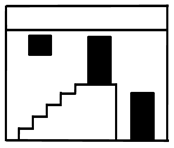 | Protruding Staircase (PS) |
|
| 2 |  | Balcony with Staircase (BS) |
|
| 3 | 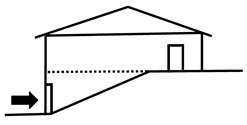 | Slope 2 Storeys Side (S2SS) |
|
| 4 | 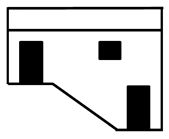 | Slope 2 Storeys Same Entrance (S2SSE) |
|
| 5 | 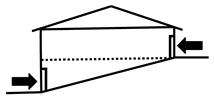 | Slope 2 Storeys (S2S) |
|
| 6 |  | 2 Storeys (2S) |
|
| 7 |  | Protruding Side Staircase (PSS) |
|
| 8 | 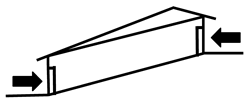 | Slope Basic (SB) |
|
| 9 |  | Protruding Balcony (PB) |
|
| 10 | 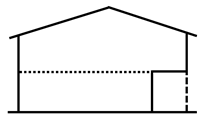 | 2 Storeys Advanced (2SA) |
|
| 11 |  | Single-Storey High (1SH) |
|
| 12 |  | 1 Storey (1S) |
|
| 13 |  | Slope 1-Storey Side (S1SS) |
|
| 14 |  | 1-Storey Porch (1SP) |
|
| 15 | 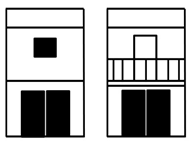 | 2 Storeys Narrow (2SN) |
|
| 16 | 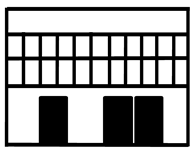 | Glazed Balcony (GB) |
|
| 17 | 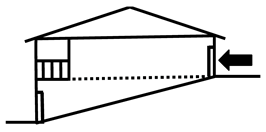 | Recessed Balcony (RB) |
|
| 18 | 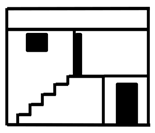 | Modified Protruding Staircase (MPS) |
|
| 19 | 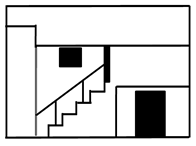 | Modified Balcony with Staircase (MBS) |
|
| 20 | 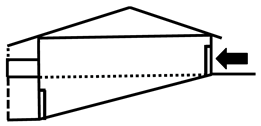 | Modified Protruding Balcony (MPB) |
|
| 21 | 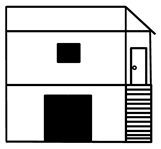 | Modified Protruding Side Staircase (MPSS) |
|
| 22 | 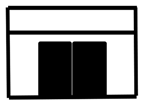 | Shed, Granary, and Storage (SGS) |
|
| S/N | Examples of Scenario | Conditions | Criteria |
|---|---|---|---|
| 1 |  |
| Two separate structures were taken into account. |
| 2 |  |
| Prioritise the typology at the main facade and facing the main road. For instance, a Balcony with a Staircase (BS) with lower elevation access to the 1st floor is considered more efficient than rear access at higher ground elevation (S2S). |
| 3 |  |
| It will be classified as Unidentified (U) |
| PS | S2S | BS | S2SS | 2S | 1S | PSS | SB | S2SSE | PB | |
|---|---|---|---|---|---|---|---|---|---|---|
| Sandim | 18 | 23 | 2 | 15 | 0 | 10 | 0 | 18 | 3 | 2 |
| Guadramil | 20 | 16 | 18 | 6 | 4 | 6 | 5 | 2 | 0 | 4 |
| Montouto | 24 | 9 | 4 | 13 | 6 | 7 | 13 | 2 | 11 | 2 |
| Rio de Onor | 8 | 15 | 34 | 1 | 6 | 4 | 8 | 2 | 0 | 10 |
| Cova da Lua | 5 | 24 | 5 | 12 | 21 | 10 | 12 | 0 | 5 | 2 |
| Aveleda | 16 | 5 | 6 | 10 | 18 | 12 | 9 | 1 | 5 | 2 |
| Pinheiro Velho | 25 | 5 | 10 | 13 | 8 | 6 | 4 | 10 | 4 | 2 |
| Moimenta | 16 | 8 | 3 | 9 | 14 | 7 | 9 | 1 | 5 | 1 |
| Average | 16.51 | 13.24 | 10.23 | 9.91 | 9.66 | 7.63 | 7.45 | 4.44 | 4.15 | 3.06 |
| Typologies | Villages | Absolute Frequency (X) | Relative Frequency (%) | Hierarchical Ranking of Relative Frequency | |||||||
|---|---|---|---|---|---|---|---|---|---|---|---|
| Sandim | Guadramil | Montouto | Rio de Onor | Cova da Lua | Aveleda | Pinheiro Velho | Moimenta | ||||
| SGS | 9 | 10 | 13 | 16 | 15 | 21 | 20 | 54 | 158 | 13.04 | 2 |
| U | 22 | 20 | 14 | 27 | 26 | 78 | 33 | 70 | 290 | 23.93 | 1 |
| PS | 11 | 16 | 13 | 10 | 2 | 21 | 21 | 30 | 124 | 10.23 | 3 |
| BS | 1 | 15 | 2 | 45 | 2 | 8 | 8 | 6 | 87 | 7.18 | 5 |
| S2S | 14 | 13 | 5 | 20 | 10 | 7 | 4 | 15 | 88 | 7.26 | 4 |
| S2SS | 9 | 5 | 7 | 1 | 5 | 13 | 11 | 17 | 68 | 5.61 | 7 |
| SB | 11 | 2 | 1 | 2 | 0 | 1 | 8 | 2 | 27 | 2.23 | 11 |
| S1SS | 0 | 2 | 0 | 1 | 0 | 1 | 0 | 3 | 7 | 0.58 | 19 |
| PB | 1 | 3 | 1 | 13 | 1 | 2 | 2 | 2 | 25 | 2.06 | 12 |
| PSS | 0 | 4 | 7 | 10 | 5 | 12 | 3 | 17 | 58 | 4.79 | 8 |
| 2S | 0 | 3 | 3 | 8 | 9 | 23 | 7 | 26 | 79 | 6.52 | 6 |
| 1S | 6 | 5 | 4 | 5 | 4 | 15 | 5 | 12 | 56 | 4.62 | 9 |
| 1SP | 0 | 1 | 0 | 0 | 0 | 0 | 0 | 2 | 3 | 0.25 | 22 |
| GB | 1 | 1 | 1 | 0 | 0 | 2 | 0 | 5 | 10 | 0.83 | 18 |
| RB | 0 | 1 | 0 | 3 | 0 | 4 | 1 | 3 | 12 | 0.99 | 16 |
| 2SA | 0 | 0 | 0 | 1 | 1 | 0 | 2 | 3 | 7 | 0.58 | 20 |
| 2SN | 0 | 9 | 1 | 7 | 0 | 4 | 0 | 2 | 23 | 1.90 | 13 |
| S2SSE | 2 | 0 | 6 | 0 | 2 | 7 | 3 | 9 | 29 | 2.39 | 10 |
| 1SH | 0 | 2 | 1 | 0 | 1 | 1 | 4 | 9 | 18 | 1.49 | 15 |
| MPS | 4 | 0 | 1 | 1 | 0 | 5 | 2 | 10 | 23 | 1.90 | 14 |
| MBS | 0 | 0 | 1 | 4 | 0 | 0 | 1 | 5 | 11 | 0.91 | 17 |
| MPB | 0 | 0 | 0 | 0 | 0 | 1 | 1 | 1 | 3 | 0.25 | 23 |
| MPSS | 0 | 0 | 0 | 0 | 0 | 1 | 1 | 4 | 6 | 0.50 | 21 |
| Absolute Frequency (Y) | 91 | 112 | 81 | 174 | 83 | 227 | 137 | 307 | 1212 | 100.00 | |
| Typologies | Villages | Relative Frequency | |||||||
|---|---|---|---|---|---|---|---|---|---|
| Sandim | Guadramil | Montouto | Rio de Onor | Cova da Lua | Aveleda | Pinheiro Velho | Moimenta | ||
| SGS | 0.0098 | 0.0120 | 0.0087 | 0.0187 | 0.0089 | 0.0244 | 0.0147 | 0.0330 | 0.1304 |
| U | 0.0180 | 0.0221 | 0.0160 | 0.0344 | 0.0164 | 0.0448 | 0.0270 | 0.0606 | 0.2393 |
| PS | 0.0077 | 0.0095 | 0.0068 | 0.0147 | 0.0070 | 0.0192 | 0.0116 | 0.0259 | 0.1023 |
| BS | 0.0054 | 0.0066 | 0.0048 | 0.0103 | 0.0049 | 0.0134 | 0.0081 | 0.0182 | 0.0718 |
| S2S | 0.0055 | 0.0067 | 0.0049 | 0.0104 | 0.0050 | 0.0136 | 0.0082 | 0.0184 | 0.0726 |
| S2SS | 0.0042 | 0.0052 | 0.0037 | 0.0081 | 0.0038 | 0.0105 | 0.0063 | 0.0142 | 0.0561 |
| SB | 0.0017 | 0.0021 | 0.0015 | 0.0032 | 0.0015 | 0.0042 | 0.0025 | 0.0056 | 0.0223 |
| S1SS | 0.0004 | 0.0005 | 0.0004 | 0.0008 | 0.0004 | 0.0011 | 0.0007 | 0.0015 | 0.0058 |
| PB | 0.0015 | 0.0019 | 0.0014 | 0.0030 | 0.0014 | 0.0039 | 0.0023 | 0.0052 | 0.0206 |
| PSS | 0.0036 | 0.0044 | 0.0032 | 0.0069 | 0.0033 | 0.0090 | 0.0054 | 0.0121 | 0.0479 |
| 2S | 0.0049 | 0.0060 | 0.0044 | 0.0094 | 0.0045 | 0.0122 | 0.0074 | 0.0165 | 0.0652 |
| 1S | 0.0035 | 0.0043 | 0.0031 | 0.0066 | 0.0032 | 0.0087 | 0.0052 | 0.0117 | 0.0462 |
| 1SP | 0.0002 | 0.0002 | 0.0002 | 0.0004 | 0.0002 | 0.0005 | 0.0003 | 0.0006 | 0.0025 |
| GB | 0.0006 | 0.0008 | 0.0006 | 0.0012 | 0.0006 | 0.0015 | 0.0009 | 0.0021 | 0.0083 |
| RB | 0.0007 | 0.0009 | 0.0007 | 0.0014 | 0.0007 | 0.0019 | 0.0011 | 0.0025 | 0.0099 |
| 2SA | 0.0004 | 0.0005 | 0.0004 | 0.0008 | 0.0004 | 0.0011 | 0.0007 | 0.0015 | 0.0058 |
| 2SN | 0.0014 | 0.0018 | 0.0013 | 0.0027 | 0.0013 | 0.0036 | 0.0021 | 0.0048 | 0.0190 |
| S2SSE | 0.0018 | 0.0022 | 0.0016 | 0.0034 | 0.0016 | 0.0045 | 0.0027 | 0.0061 | 0.0239 |
| 1SH | 0.0011 | 0.0014 | 0.0010 | 0.0021 | 0.0010 | 0.0028 | 0.0017 | 0.0038 | 0.0149 |
| MPS | 0.0014 | 0.0018 | 0.0013 | 0.0027 | 0.0013 | 0.0036 | 0.0021 | 0.0048 | 0.0190 |
| MBS | 0.0007 | 0.0008 | 0.0006 | 0.0013 | 0.0006 | 0.0017 | 0.0010 | 0.0023 | 0.0091 |
| MPB | 0.0002 | 0.0002 | 0.0002 | 0.0004 | 0.0002 | 0.0005 | 0.0003 | 0.0006 | 0.0025 |
| MPSS | 0.0004 | 0.0005 | 0.0003 | 0.0007 | 0.0003 | 0.0009 | 0.0006 | 0.0013 | 0.0050 |
| Relative Frequency | 0.0751 | 0.0924 | 0.0668 | 0.1436 | 0.0685 | 0.1873 | 0.1130 | 0.2533 | 1.0000 |
| Typologies | Villages | Absolute Frequency (X) | |||||||
|---|---|---|---|---|---|---|---|---|---|
| Sandim | Guadramil | Montouto | Rio de Onor | Cova da Lua | Aveleda | Pinheiro Velho | Moimenta | ||
| SGS | 11.8630 | 14.6007 | 10.5594 | 22.6832 | 10.8201 | 29.5924 | 17.8597 | 40.0215 | 158 |
| U | 21.7739 | 26.7987 | 19.3812 | 41.6337 | 19.8597 | 54.3152 | 32.7805 | 73.4571 | 290 |
| PS | 9.3102 | 11.4587 | 8.2871 | 17.8020 | 8.4917 | 23.2244 | 14.0165 | 31.4092 | 124 |
| BS | 6.5322 | 8.0396 | 5.8144 | 12.4901 | 5.9579 | 16.2946 | 9.8342 | 22.0371 | 87 |
| S2S | 6.6073 | 8.1320 | 5.8812 | 12.6337 | 6.0264 | 16.4818 | 9.9472 | 22.2904 | 88 |
| S2SS | 5.1056 | 6.2838 | 4.5446 | 9.7624 | 4.6568 | 12.7360 | 7.6865 | 17.2244 | 68 |
| SB | 2.0272 | 2.4950 | 1.8045 | 3.8762 | 1.8490 | 5.0569 | 3.0520 | 6.8391 | 27 |
| S1SS | 0.5256 | 0.6469 | 0.4678 | 1.0050 | 0.4794 | 1.3111 | 0.7913 | 1.7731 | 7 |
| PB | 1.8771 | 2.3102 | 1.6708 | 3.5891 | 1.7120 | 4.6823 | 2.8259 | 6.3325 | 25 |
| PSS | 4.3548 | 5.3597 | 3.8762 | 8.3267 | 3.9719 | 10.8630 | 6.5561 | 14.6914 | 58 |
| 2S | 5.9315 | 7.3003 | 5.2797 | 11.3416 | 5.4101 | 14.7962 | 8.9299 | 20.0107 | 79 |
| 1S | 4.2046 | 5.1749 | 3.7426 | 8.0396 | 3.8350 | 10.4884 | 6.3300 | 14.1848 | 56 |
| 1SP | 0.2252 | 0.2772 | 0.2005 | 0.4307 | 0.2054 | 0.5619 | 0.3391 | 0.7599 | 3 |
| GB | 0.7508 | 0.9241 | 0.6683 | 1.4356 | 0.6848 | 1.8729 | 1.1304 | 2.5330 | 10 |
| RB | 0.9010 | 1.1089 | 0.8020 | 1.7228 | 0.8218 | 2.2475 | 1.3564 | 3.0396 | 12 |
| 2SA | 0.5256 | 0.6469 | 0.4678 | 1.0050 | 0.4794 | 1.3111 | 0.7913 | 1.7731 | 7 |
| 2SN | 1.7269 | 2.1254 | 1.5371 | 3.3020 | 1.5751 | 4.3078 | 2.5998 | 5.8259 | 23 |
| S2SSE | 2.1774 | 2.6799 | 1.9381 | 4.1634 | 1.9860 | 5.4315 | 3.2781 | 7.3457 | 29 |
| 1SH | 1.3515 | 1.6634 | 1.2030 | 2.5842 | 1.2327 | 3.3713 | 2.0347 | 4.5594 | 18 |
| MPS | 1.7269 | 2.1254 | 1.5371 | 3.3020 | 1.5751 | 4.3078 | 2.5998 | 5.8259 | 23 |
| MBS | 0.8259 | 1.0165 | 0.7351 | 1.5792 | 0.7533 | 2.0602 | 1.2434 | 2.7863 | 11 |
| MPB | 0.2252 | 0.2772 | 0.2005 | 0.4307 | 0.2054 | 0.5619 | 0.3391 | 0.7599 | 3 |
| MPSS | 0.4505 | 0.5545 | 0.4010 | 0.8614 | 0.4109 | 1.1238 | 0.6782 | 1.5198 | 6 |
| Absolute Frequency (Y) | 91 | 112 | 81 | 174 | 83 | 227 | 137 | 307 | 1212 |
| Typologies | Villages | |||||||
|---|---|---|---|---|---|---|---|---|
| Sandim | Guadramil | Montouto | Rio de Onor | Cova da Lua | Aveleda | Pinheiro Velho | Moimenta | |
| SGS | −0.8312 | −1.2040 | 0.7511 | −1.4032 | 1.2707 | −1.5795 | 0.5064 | 2.2096 |
| U | 0.0484 | −1.3133 | −1.2223 | −2.2679 | 1.3778 | 3.2137 | 0.0383 | −0.4034 |
| PS | 0.5538 | 1.3416 | 1.6371 | −1.8491 | −2.2277 | −0.4616 | 1.8653 | −0.2515 |
| BS | −2.1645 | 2.4548 | −1.5819 | 9.1988 | −1.6215 | −2.0548 | −0.5849 | −3.4162 |
| S2S | 2.8760 | 1.7071 | −0.3634 | 2.0725 | 1.6187 | −2.3356 | −1.8857 | −1.5442 |
| S2SS | 1.7235 | −0.5121 | 1.1518 | −2.8044 | 0.1591 | 0.0740 | 1.1952 | −0.0541 |
| SB | 6.3020 | −0.3134 | −0.5989 | −0.9530 | −1.3598 | −1.8041 | 2.8323 | −1.8504 |
| S1SS | −0.7250 | 1.6824 | −0.6840 | −0.0049 | −0.6924 | −0.2717 | −0.8895 | 0.9214 |
| PB | −0.6402 | 0.4538 | −0.5190 | 4.9675 | −0.5442 | −1.2396 | −0.4913 | −1.7217 |
| PSS | −2.0868 | −0.5873 | 1.5866 | 0.5799 | 0.5158 | 0.3450 | −1.3888 | 0.6023 |
| 2S | −2.4355 | −1.5916 | −0.9921 | −0.9922 | 1.5434 | 2.1327 | −0.6458 | 1.3389 |
| 1S | 0.8756 | −0.0769 | 0.1331 | −1.0720 | 0.0843 | 1.3931 | −0.5286 | −0.5801 |
| 1SP | −0.4746 | 1.3727 | −0.4478 | −0.6563 | −0.4533 | −0.7496 | −0.5823 | 1.4226 |
| GB | 0.2876 | 0.0790 | 0.4057 | −1.1982 | −0.8275 | 0.0928 | −1.0632 | 1.5501 |
| RB | −0.9492 | −0.1034 | −0.8955 | 0.9731 | −0.9065 | 1.1690 | −0.3060 | −0.0227 |
| 2SA | −0.7250 | −0.8043 | −0.6840 | −0.0049 | 0.7520 | −1.1450 | 1.3589 | 0.9214 |
| 2SN | −1.3141 | 4.7155 | −0.4332 | 2.0351 | −1.2550 | −0.1483 | −1.6124 | −1.5851 |
| S2SSE | −0.1202 | −1.6370 | 2.9177 | −2.0404 | 0.0100 | 0.6730 | −0.1536 | 0.6104 |
| 1SH | −1.1625 | 0.2610 | −0.1851 | −1.6075 | −0.2096 | −1.2915 | 1.3778 | 2.0796 |
| MPS | 1.7298 | −1.4579 | −0.4332 | −1.2668 | −1.2550 | 0.3335 | −0.3720 | 1.7293 |
| MBS | −0.9088 | −1.0082 | 0.3089 | 1.9264 | −0.8679 | −1.4354 | −0.2183 | 1.3262 |
| MPB | −0.4746 | −0.5265 | −0.4478 | −0.6563 | −0.4533 | 0.5845 | 1.1349 | 0.2754 |
| MPSS | −0.6712 | −0.7446 | −0.6332 | −0.9281 | −0.6410 | −0.1167 | 0.3907 | 2.0118 |
| Strategy | Descriptions | |
|---|---|---|
| Heating Strategy (Cold Season) | Cooling Strategy (Hot Season) | |
High thermal inertia walls |
|
|
Gable roof |
| |
Low roof space |
| |
Extended roof and balcony |
|
|
| Roof cover (ceramic and slates)  |
|
|
Animals at ground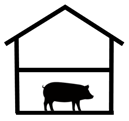 |
| |
Limited number and size of openings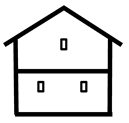 |
|
|
Small indoor volume |
| |
Dark exterior |
| |
Vegetation wall |
| |
Indoor-heating position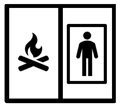 |
| |
| High Thermal Inertia | Gable Roof | Low Roof Space | Extended Roof and Balcony | Roof Cover | Animals at Ground * | Limited Openings and size | Dark Thermal Envelope ** | Vegetation wall | Kitchen/Fireplace locations | |||
|---|---|---|---|---|---|---|---|---|---|---|---|---|
| 1 | Protruding Staircase | PS | ✓ | ✓ | ✓ | ✓ | ✓ | ✓ | ✓ | ✓ | ✓ | |
| 2 | Slope 2 Storeys | S2S | ✓ | ✓ | ✓ | ✓ | ✓ | ✓ | ✓ | ✓ | ✓ | |
| 3 | Balcony with Staircase | BS | ✓ | ✓ | ✓ | ✓ | ✓ | ✓ | ✓ | ✓ | ✓ | ✓ |
| 4 | Slope 2-Storey Side | S2SS | ✓ | ✓ | ✓ | ✓ | ✓ | ✓ | ✓ | ✓ | ✓ | |
| 5 | 2 Storeys | 2S | ✓ | ✓ | ✓ | ✓ | ✓ | ✓ | ✓ | ✓ | ✓ | |
| 6 | 1 Storey | 1S | ✓ | ✓ | ✓ | ✓ | ✓ | ✓ | ✓ | ✓ | ||
| 7 | Protruding Side Staircase | PSS | ✓ | ✓ | ✓ | ✓ | ✓ | ✓ | ✓ | ✓ | ✓ | |
| 8 | Slope Basic | SB | ✓ | ✓ | ✓ | ✓ | ✓ | ✓ | ✓ | ✓ | ||
| 9 | Slope 2 Storeys Same Entrance | S2SSE | ✓ | ✓ | ✓ | ✓ | ✓ | ✓ | ✓ | ✓ | ✓ | |
| 10 | Protruding Balcony | PB | ✓ | ✓ | ✓ | ✓ | ✓ | ✓ | ✓ | ✓ | ✓ | ✓ |
| 11 | 2 Storeys Advanced | 2SA | ✓ | ✓ | ✓ | ✓ | ✓ | ✓ | ✓ | ✓ | ✓ | |
| 12 | Single Storey High | 1SH | ✓ | ✓ | ✓ | ✓ | ✓ | ✓ | ✓ | ✓ | ||
| 13 | Slope 1 Storey Side | S1SS | ✓ | ✓ | ✓ | ✓ | ✓ | ✓ | ✓ | ✓ | ||
| 14 | 1 Storey Porch | 1SP | ✓ | ✓ | ✓ | ✓ | ✓ | ✓ | ✓ | ✓ | ||
| 15 | 2 Storeys Narrow | 2SN | ✓ | ✓ | ✓ | ✓ | ✓ | ✓ | ||||
| 16 | Glazed Balcony | GB | ✓ | ✓ | ✓ | ✓ | ✓ | ✓ | ✓ | ✓ | ||
| 17 | Recessed Balcony | RB | ✓ | ✓ | ✓ | ✓ | ✓ | ✓ | ✓ | ✓ | ✓ | ✓ |
| 18 | Modified Protruding Staircase | MPS | ✓ | ✓ | ✓ | ✓ | ✓ | ✓ | ✓ | ✓ | ✓ | |
| 19 | Modified Balcony with Staircase | MBS | ✓ | ✓ | ✓ | ✓ | ✓ | ✓ | ✓ | ✓ | ✓ | |
| 20 | Modified Protruding Balcony | MPB | ✓ | ✓ | ✓ | ✓ | ✓ | ✓ | ✓ | ✓ | ✓ | ✓ |
| 21 | Modified Protruding Side Staircase | MPSS | ✓ | ✓ | ✓ | ✓ | ✓ | ✓ | ✓ | ✓ | ✓ |
| Bioclimatic Solutions | Actionable Recommendation | Circular Economy, Life Cycle, and Sustainability | |
|---|---|---|---|
| 1 | High thermal inertia |
|
|
| 2 | Gable roof |
|
|
| 3 | Low space roof |
|
|
| 4 | Extended roof and balcony |
|
|
| 5 | Roof cover |
|
|
| 6 | Animals at ground floor |
|
|
| 7 | Limited openings and size |
|
|
| 8 | Small indoor volume |
|
|
| 9 | Dark thermal envelope |
|
|
| 10 | Vegetation wall |
|
|
| 11 | Kitchen/fireplace locations |
|
|
Disclaimer/Publisher’s Note: The statements, opinions and data contained in all publications are solely those of the individual author(s) and contributor(s) and not of MDPI and/or the editor(s). MDPI and/or the editor(s) disclaim responsibility for any injury to people or property resulting from any ideas, methods, instructions or products referred to in the content. |
© 2024 by the authors. Licensee MDPI, Basel, Switzerland. This article is an open access article distributed under the terms and conditions of the Creative Commons Attribution (CC BY) license (https://creativecommons.org/licenses/by/4.0/).
Share and Cite
Khei, S.; Mateus, R.; Ortega, J.; Briones-Llorente, R. Quantitative Analysis of Vernacular Residential Building Typologies and Bioclimatic Strategies in the Warm-Summer Mediterranean Climate: The Montesinho Natural Park as a Case Study. Buildings 2024, 14, 2321. https://doi.org/10.3390/buildings14082321
Khei S, Mateus R, Ortega J, Briones-Llorente R. Quantitative Analysis of Vernacular Residential Building Typologies and Bioclimatic Strategies in the Warm-Summer Mediterranean Climate: The Montesinho Natural Park as a Case Study. Buildings. 2024; 14(8):2321. https://doi.org/10.3390/buildings14082321
Chicago/Turabian StyleKhei, Soon, Ricardo Mateus, Javier Ortega, and Raúl Briones-Llorente. 2024. "Quantitative Analysis of Vernacular Residential Building Typologies and Bioclimatic Strategies in the Warm-Summer Mediterranean Climate: The Montesinho Natural Park as a Case Study" Buildings 14, no. 8: 2321. https://doi.org/10.3390/buildings14082321







